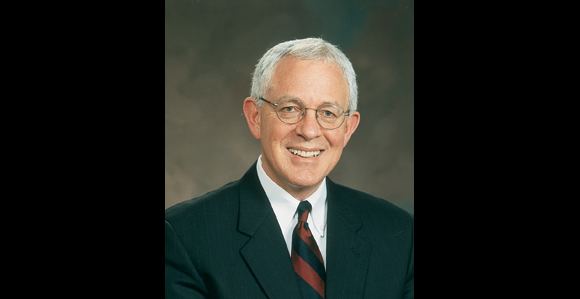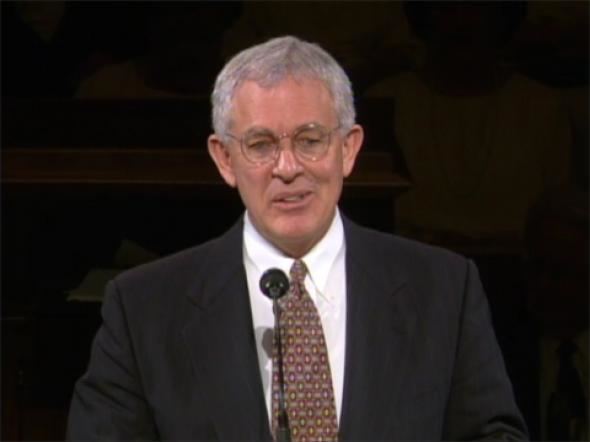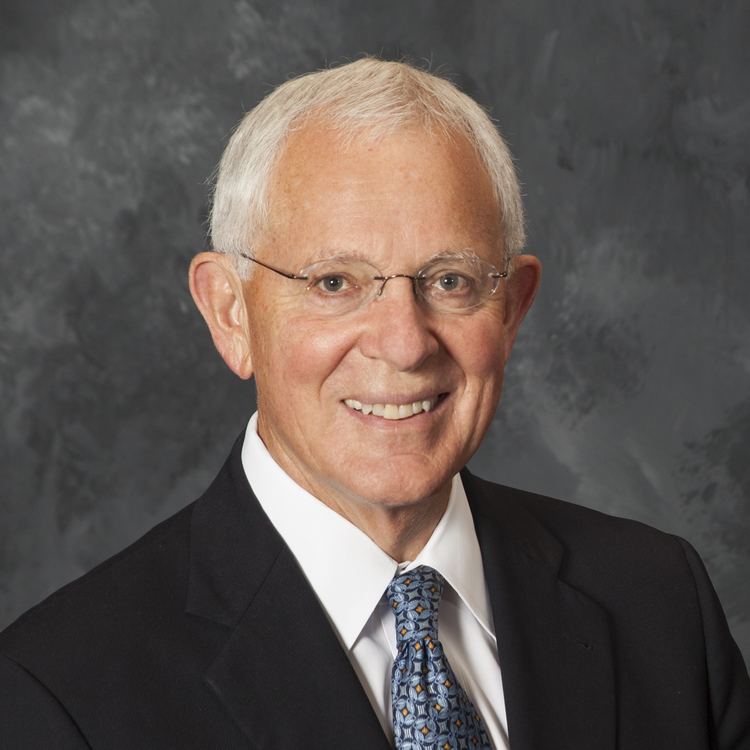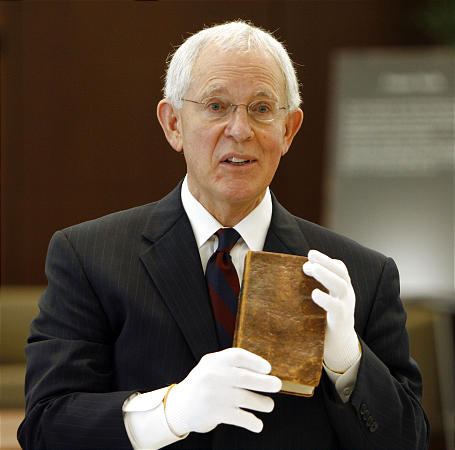Called by Ezra Taft Benson Children 8 Called by Gordon B. Hinckley Name Marlin Jensen | End reason Honorably released Role Historian Called by Thomas S. Monson | |
 | ||
Full Name Marlin Keith Jensen Spouse Kathleen Bushnell (m. 1967) Education | ||
Elder marlin k jensen on polyandry swedish rescue fireside
Marlin Keith Jensen (born May 18, 1942) has been a general authority of The Church of Jesus Christ of Latter-day Saints (LDS Church) since 1989. He served as the official Church Historian and Recorder of the church from 2005 to 2012. He was the 19th man to hold that calling since it was established in 1830. Jensen was made an emeritus general authority in the October 2012 general conference.
Contents
- Elder marlin k jensen on polyandry swedish rescue fireside
- Elder marlin k jensen stand in the sacred grove
- Biographical background
- General authority
- Area Presidencies
- Church Historian
- Major statements
- Political parties
- The Mormons PBS
- Illegal immigrants
- Historical openness
- FLDS polygamy
- Gay marriage
- Modern apostasy
- Articles
- General Conference addresses
- Interviews
- References

Elder marlin k jensen stand in the sacred grove
Biographical background

Jensen was born in Huntsville, Utah. As a 19-year-old, he served as a missionary for the LDS Church in West Germany. After returning home in 1964, he graduated from BYU with a B.S. in German. He obtained a Juris Doctor degree from the University of Utah College of Law in 1970, graduating first in his class. At the relatively young age of 28, he served as bishop of his ward in Huntsville, as had both his father and grandfather. He later served as president of the Huntsville Utah Stake. In 1987 he became a regional representative for the Kaysville Utah and Layton Utah regions.

Jensen married Kathleen Bushnell on June 9, 1967 in the Salt Lake Temple. They are the parents of eight children.

Professionally, Jensen was an attorney in private practice in Ogden, Utah, specializing in business and estate planning. This supported his real passion of living a farming lifestyle. His family operates a ranching enterprise called Jensens' Middle Fork Ranch, in which he is a partner.

In August 2012, Utah Governor Gary Herbert nominated Jensen to serve on the Utah State Board of Regents, which oversees the state's colleges and universities.
General authority

In 1989, Jensen became a member of the First Quorum of the Seventy at the age of 46. In 1993, he was made assistant executive director of the church's Priesthood Department, later becoming executive director until 2001. From 1993 to 1995, while a general authority, Jensen served as president of the church's New York Rochester Mission. In 1995, Jensen became a member of the church's Public Affairs Committee. From 1996 to 1998 he was executive director of the Church Historical Department. He served in the First Quorum of the Seventy until 1998, when he became a member of the Presidency of the Seventy, and in 2000 he also became the general president of the church's Sunday School. Jensen served in these positions until 2001. In 2004, he replaced D. Todd Christofferson as executive director of the Family and Church History Department, a position he held previously when it was just the Historical Department. In 2005, he became the first Church Historian and Recorder to serve since 1997. He served in this capacity until 2012 and was designated an emeritus general authority in October 2012.
Jensen is one of the few general authorities of the LDS Church who self-identifies as a member of the Democratic Party.
Area Presidencies
Jensen has served in various area presidency positions. As a new Seventy in 1989, he was counselor to John K. Carmack, president of the Utah Central Area. From 1990 to 1992, Jensen served as president of the Utah North Area. He later served first as a counselor, then as president, of the North America Northeast Area. He was president of the Europe Central Area from 2001 to 2003.
Church Historian
Jensen was Church Historian and Recorder from 2005 to 2012, and executive director of the church's history department from 2004 to 2012. In these roles and as a church official, Jensen has spoken at General Conference, BYU Women's Conference (1998), BYU Family History and Genealogy Conference (2006), Northern Utah Family History Conference (2006), Yale's American Society of Church History (2007), and the Mormon History Association Conference (2005 and 2007). Jensen has also notably attended various conferences, including the Library of Congress' Worlds of Joseph Smith Symposium (2005) and UVSC's Mormon Studies Conference (2008).
Not a trained historian or academic, Jensen brought a passion to his work; reading widely, gathering scholars, and implementing changes. Observers reported that his contributions "helped transform the Utah-based faith's approach to its history," and saw the church's history department "truly come of age." Terryl Givens said of his legacy, "Marlin Jensen has done more to further the cause of Mormon history than any person of the current generation."
Several major developments occurred during Jensen's leadership over the church's history department.
In January 2012, it was announced that, after a transition period, Steven E. Snow would replace Jensen as the Church Historian and Recorder later in the year. Snow succeeded Jensen on August 1, 2012. On October 6, 2012, Jensen was then released from the First Quorum of the Seventy and designated as an emeritus general authority at the LDS Church's semi-annual general conference. LDS Church practice is to release Seventies from service following their 70th birthdays, which Jensen had observed in May of that year.
Major statements
Jensen at times addressed the press or public as a church representative. He often acted as a peacemaker, attempting to bring understanding or empathy to divisive issues. While not always official church positions, his statements illustrated his candid views as a leader within the LDS Church.
Political parties
On April 22, 1998, Jensen was sent by the First Presidency to give an interview with the Salt Lake Tribune in reaction to a 1998 First Presidency statement and to explicitly state that someone could be a devout Mormon and a member of the Democratic Party. He lamented the decline of the Utah Democratic Party, and regretted that the Republican Party might be seen as the "church party". He felt that good Latter-day Saints will have conflicts with either party's platform, from which they must selectively pick and choose.
Coming from a church official on assignment from the First Presidency, the comments surprised many prominent Utah politicians and Latter-day Saints.
The Mormons (PBS)
Jensen featured prominently in the 2007 PBS documentary The Mormons. His March 7, 2006 interview probed a variety of subjects, including some controversial topics.
Illegal immigrants
On February 13, 2008, Jensen urged the Utah State Legislature to show compassion in considering laws that would affect undocumented immigrants. Several bills were under debate to block undocumented access to jobs and public benefits, such as in-state tuition and driving privilege cards. On behalf of the First Presidency at Westminster College's Interfaith Dialogue on Immigration, Jensen said lawmakers should "take a step back" since this "deal[s] with God's children" and "a more humane approach is warranted".
Historical openness
In a February 25, 2008 press release about the new Church Historian's Press publishing the Joseph Smith Papers, Jensen offered instruction on how to approach church history. He asked for LDS historians to "not be in an apologetic mode, but to be as open, candid and fair about our own history as we can". They should foster a culture of mutual openness with the general historical community. Jensen observed "greater dialogue coming about, less suspicion and a greater openness that is coming to pass".
FLDS polygamy
On May 5, 2008, Jensen officially responded to Timothy Egan's New York Times op-ed piece which claimed that FLDS polygamy "is a look back at some of the behavior of Mormonism's founding fathers". Jensen strongly disagreed and pointed out that by 19th-century norms a 15-year-old bride was not unusual nor considered abused and the "common-law marriage age for women was 12". Plural marriages were "not controlled by the authority of one individual" and "the consent of individual women was always honored in any marriage proposal". In addition, many 19th-century polygamous wives were well-educated, politically active professionals.
Gay marriage
On September 19, 2010, members of the Oakland, California stake were invited to share with Jensen their experiences and troubles over the LDS Church's involvement in the Proposition 8 campaign to ban gay marriage in California. After several recounted their painful experiences, Jensen responded with empathy and a personal apology, saying, “To the full extent of my capacity, I say that I am sorry .... I know that many very good people have been deeply hurt, and I know that the Lord expects better of us.”
Modern apostasy
At the invitation of Utah State University professor Philip Barlow, Jensen held a "Q&A" with a Mormon Studies student group on November 11, 2011. Jensen was asked if church leaders were aware that members were discovering problems with LDS Church history through the internet, and what is to be done for those who may be affected or "who are already leaving in droves". Jensen responded that top church leaders "realize that, maybe, since Kirtland we've never had a period of, I'll call it apostasy, like we're having right now, largely over these issues." He said a new church initiative would give answers to troubling questions, and such issues should be discussed more openly with the new internet-savvy generation. These remarks were recorded by a student and circulated online, and were picked up in a Reuters "Special Report". Jensen later clarified that critics were overstating his remarks, saying "To say we are experiencing some Titanic-like wave of apostasy is inaccurate."
